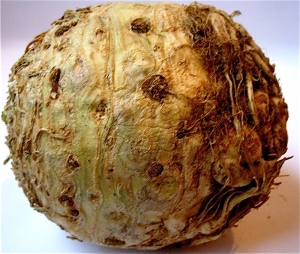
A sample of icewine at Peller Estates
The expression “When life gives you lemons, make lemonade” may be a bit of a cliché but when it comes to Canadians and winter weather, it’s an apt metaphor for what we do. Except instead of lemonade, we’re making icewine.
Icewine was first made in Germany, where it is known as ‘eiswein’. It involves leaving grapes on the vines to freeze which concentrates the sugars. When pressed, the grapes yield a sweet, viscous nectar that is reminiscent of fruit and honey. While Germany may lay claim to icewine’s roots, Canada has become a top producer with Canadian wineries regularly winning awards at international competitions. To learn more about how Ontario icewines are made, visit www.ontariograpes.com.
Each winter, the Niagara wine region in Southern Ontario holds an icewine festival and this year I had the pleasure of attending some of the events. A number of wineries hosted special tastings with activities and entertainment. The main street of Niagara-on-the-Lake was blocked off to make way for a number of booths featuring samples from local winemakers and small bites from area restauranteurs.

An outdoor ice bar
Our day got off to a late start but it’s only a short drive to the Niagara region from Toronto (just over an hour, if traffic is good). We stopped at Flat Rock Cellars and sampled a couple of their vintages. They were also selling icewine marshmallows for toasting over the outdoor fire and their pond had been cleared for skating but unfortunately the ice conditions were poor so no one was out. We moved on to Peller Estates who were hosting their tastings at an outdoor ice bar. They featured icewines made from three different grapes: cabernet franc, vidal and riesling. Like Flat Rock, Peller was also offering icewine marshmallows on sticks for toasting over fire pits. The toasted marshmallows were certainly better than anything you can buy in a bag but they were extremely sweet! To finish off, Chef Jason Parsons was offering his signature icewine infused white hot chocolate. It was the perfect drink to warm up with on a cold day.

Icewine marshmallows, ready for toasting over the fire
Finally we went into town for the main event. At the Fallsview Casino Icewine Lounge local restaurants were offering up small plates of their fare and icewine was flowing freely. Tokens were for sale at the entrance and samples typically cost between one and three tokens. There was entertainment and ice sculptors were wielding their chainsaws, producing temporary works of art. The most popular booth was the 20 Bees martini bar, which featured icewine martinis poured down an ice chute, ensuring the drinks were ice cold by the time they hit your glass (see recipe for the cocktail below). The food offered was very hearty including pork and beans, squash soup and a Provençal duck stew.

Icewine martinis are poured through an ice chute
The festival is held each year and runs for two weekends. For information on planning a trip next year, visit www.niagarawinefestival.com. It’s a unique way to experience wine country in the off-season. A weekend of fine dining, great wine and perhaps a visit to the casino or a spa is the perfect way to chase away the mid-winter blues!

An ice sculptor at work

Entertainment at the festival
If you aren’t able to make it to the festival, you can still get into the spirit at home. Niagara icewine is available around the world (I once saw some in a wine shop in Rome), although it’s not cheap. However, on occasion it’s an indulgent treat that’s worth the splurge. For more icewine cocktails, click here: Peller Estates Icewine Cocktails.
Icewine Cocktail
As featured at the 20 Bees booth at the 2009 Niagara Icewine Festival
Makes 1 (strong) drink, can easily be doubled.
- 2 ounces Skyy Vodka
- 1 ounce 20 Bees Icewine
Chill a cocktail shaker in the freezer. Combine a scoop of ice cubes, the vodka and icewine. Shake well and strain into a chilled wineglass or martini glass.

An icewine martini
Icewine Jelly
This makes a great accompaniment to a cheese plate.
Makes approximately 3/4 cup of jelly
- 1 cup icewine
- 1 package Certo pectin
- In a medium saucepan, combine icewine and pectin. Stir to combine and bring to a boil on high heat.
- Reduce heat to medium and simmer for 15 minutes, until jelly begins to thicken. Pour into a container and refrigerate until jelly cools and sets, at least 1 hour.
- Serve with cheeses, foie gras, etc.

Icewine jelly with Comfort Cream cheese and crackers
Bon Appétit and Enjoy!













